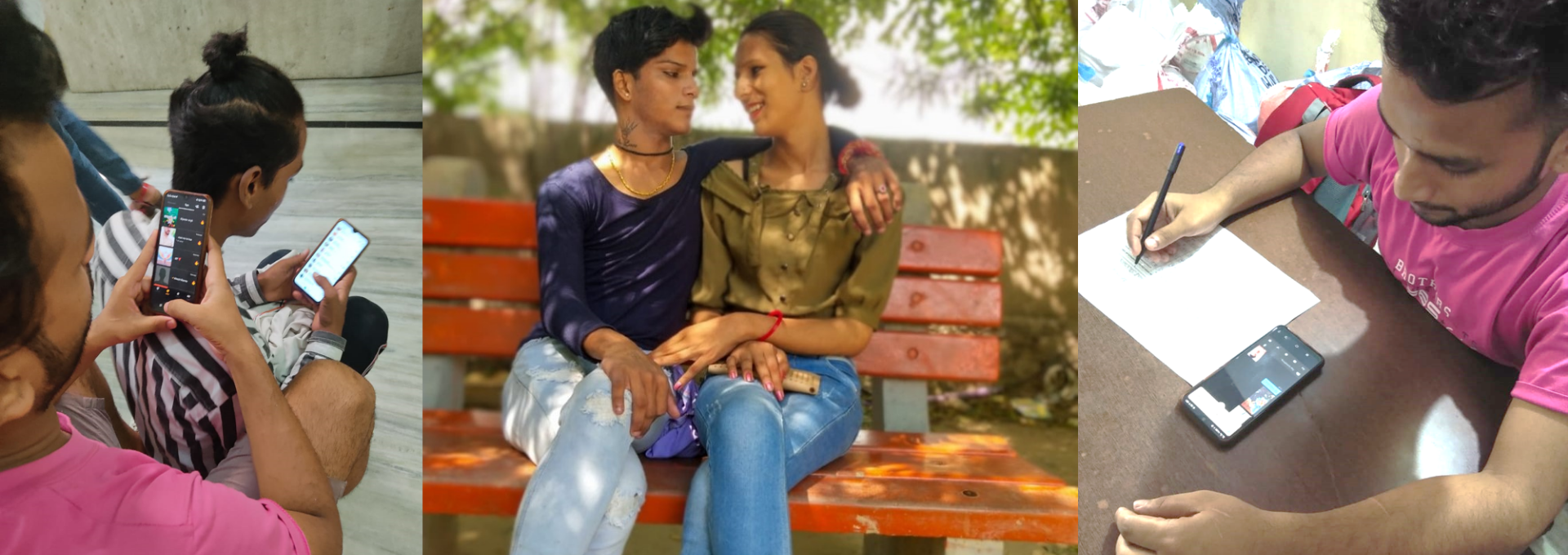
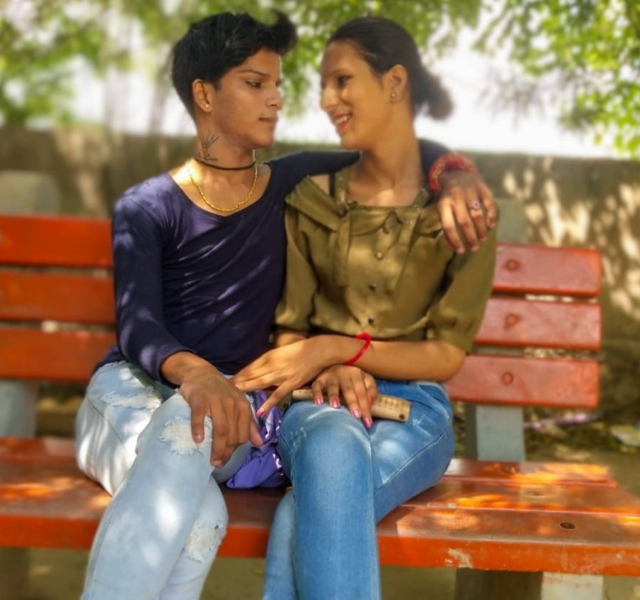
Mapping and Size Estimation
Establishing the size of the Key Population (KP) in a country is critical for its HIV intervention programs. While there are various methods available to estimate the size of a particular population, such as census-taking, capture–recapture, multiplier, network scale-up and geographical hotspot-based mapping among others, there remains enormous scope to develop novel methods that can further help in reaching most-at-risk populations.
The internet and smart phones have touched and transformed the fundamental fabric of social patterns and society. The way we communicate in public and personal spaces has seen radical transformation. The same shifts have been observed in communication patterns among Men who have Sex with Men (MSM), particularly impacting how they get connected for sexual solicitation. With advancements in technology and easy access to virtual platforms, MSMs are now using websites and mobile applications for solicitation. This is naturally a new trend in solicitation patterns, over and above the more traditional ways of finding sexual partners at geographical hotspots. As a result, the need to estimate population size of MSMs who are operating on virtual sites is an emerging one, critical to programming. The traditional methods of size estimation are dependent on venue-based/geographical mapping that provides estimates on the basis of the number of MSMs who visit physical hotspots for solicitation. However, mapping the population that is available on virtual sites needs a different strategy altogether.
There have been a few efforts globally, focusing on developing clear estimates of KPs active on virtual platforms, this dimension of HIV programming remains largely unexplored in India. As per our knowledge, factual information on MSM active on virtual platforms, their population size estimates and several other visitation and solicitation characteristics have been gathered for the first time in Delhi.
The Scenario in Delhi (National Capital Territory)
HIV prevalence among MSM in Delhi has declined from 5.34% in 2010-11 to 1.80% in 2017; however, it is much higher than the national average adult HIV prevalence of 0.30%7. India’s National AIDS Control Organization (NACO) has been consistently working towards the prevention of new infections among KPs and implementing strategies to control the spread of HIV in India through the Targeted Intervention (TI) program. As per a site validation conducted in 2014, there are an estimated number of 18,145 MSMs in the state and NACO reaches out to 16,052 MSMs in Delhi through 11 TIs exclusively for MSMs1.
The TI program in Delhi NCT has observed change in solicitation patterns in MSM due to the availability of wide range of digital media. While current population size estimation methods are mapping those MSM who frequent physical locations; perhaps, more number of MSMs are operating through virtual platforms and to cover them under the program will require a different strategy. To understand MSM active on virtual platforms and estimate their numbers, a mapping exercise was conducted by DSACS in collaboration with DL TSU, which would act as an evidence and also as a base to design a virtual intervention to reach out to MSMs with HIV services.
Virtual Mapping
Virtual Mapping is a method for identifying and estimating the number of MSM, who use mobile and web based technology applications for discreet, social and sexual networking. Size estimation was carried out by mapping the number of MSMs active on virtual spaces like websites, social networking pages, messenger groups and various applications2.
Objectives
Geography
All the eleven districts of Delhi NCT, namely, North Delhi, North East Delhi, North West Delhi, South Delhi, South East Delhi, West Delhi, Central Delhi, New Delhi, South West Delhi, Shahadra and East Delhi were included in the mapping.
Population
MSMs, aged 18 years and above, operating through virtual platforms and acknowledging having exchanged sex in return for material or cash and having agreed to participate in the mapping process with consent.
Method
Virtual mapping was carried out in three stages (Figure 1):
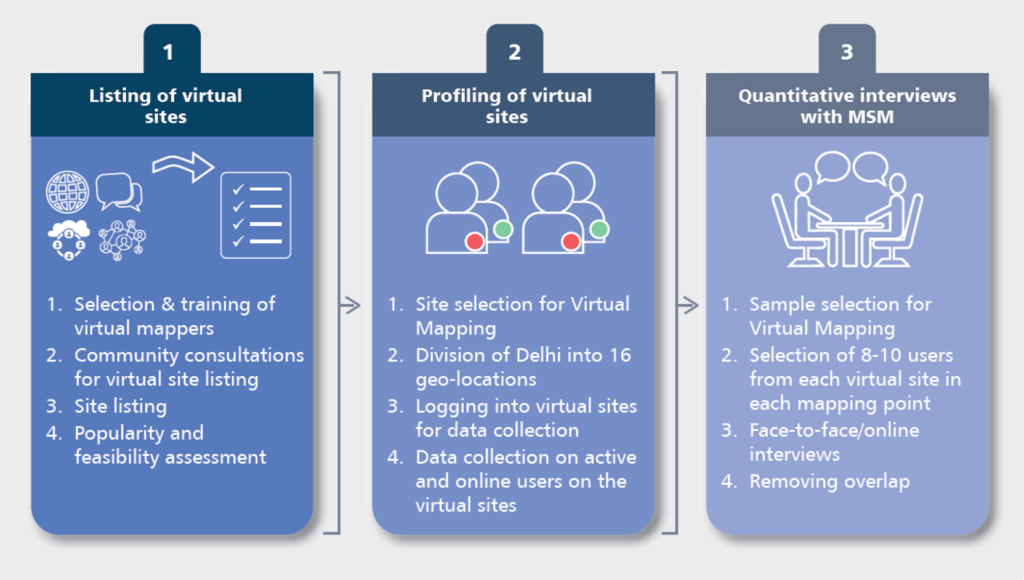
Findings
Size estimation and use of virtual sites:
The size estimation found that virtual sites are popular meeting places for a significant number of the MSMs in Delhi. A total of 28,058 MSM are using virtual sites to find other MSMs/partners in a range of 26,000 to 30,000 MSM (Figure 2).
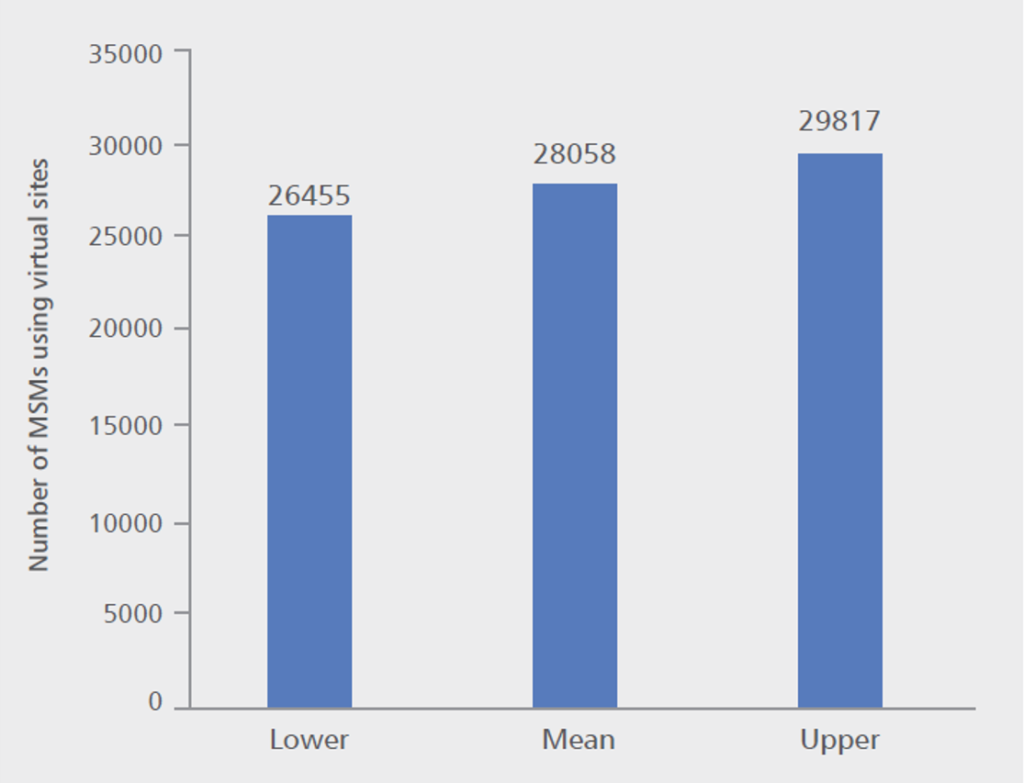
A total of 14 MSM-specific virtual sites, 14 general virtual sites, 19 social networking pages exclusive for MSM and 112 messenger groups were listed in Delhi by VMs. It was observed that a notable percentage (51%) of MSM were using more than one virtual platform for solicitation and have more than one profile on different virtual sites. It was also found that some of the virtual sites were more popular among MSMs as compared to others (Figure 3).
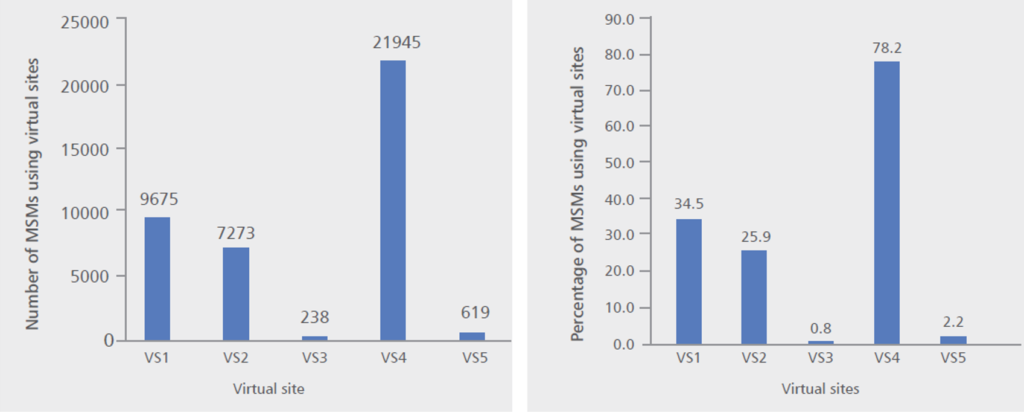
The analysis of usage of virtual sites by time and day revealed that majority of the MSMs preferred to be active during night-time (81%) and on Sundays (94%) (Figure 4).
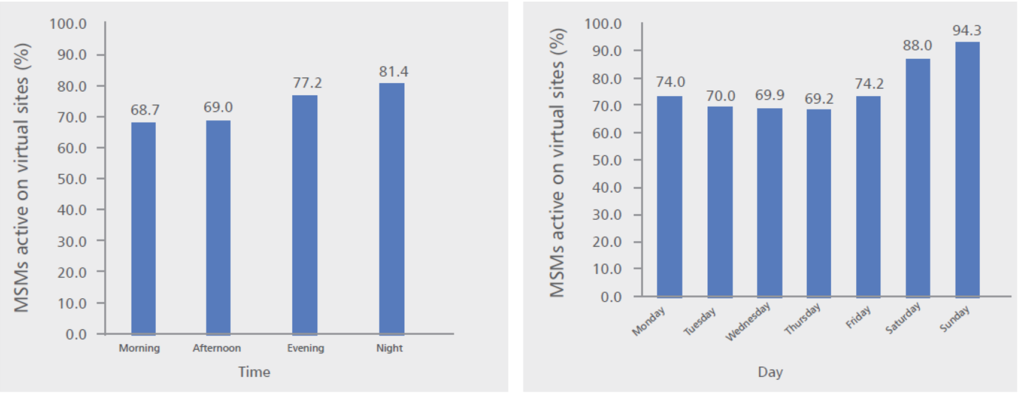
Sub-groups of MSM active on virtual platforms:
A large proportion of MSM on virtual sites are “Panthi”9 and double decker9. 30% of the MSMs identified themselves as “Panthi” (those who prefer to be on top) while 26% as “double decker” and 20% as bisexuals (Figure 5).
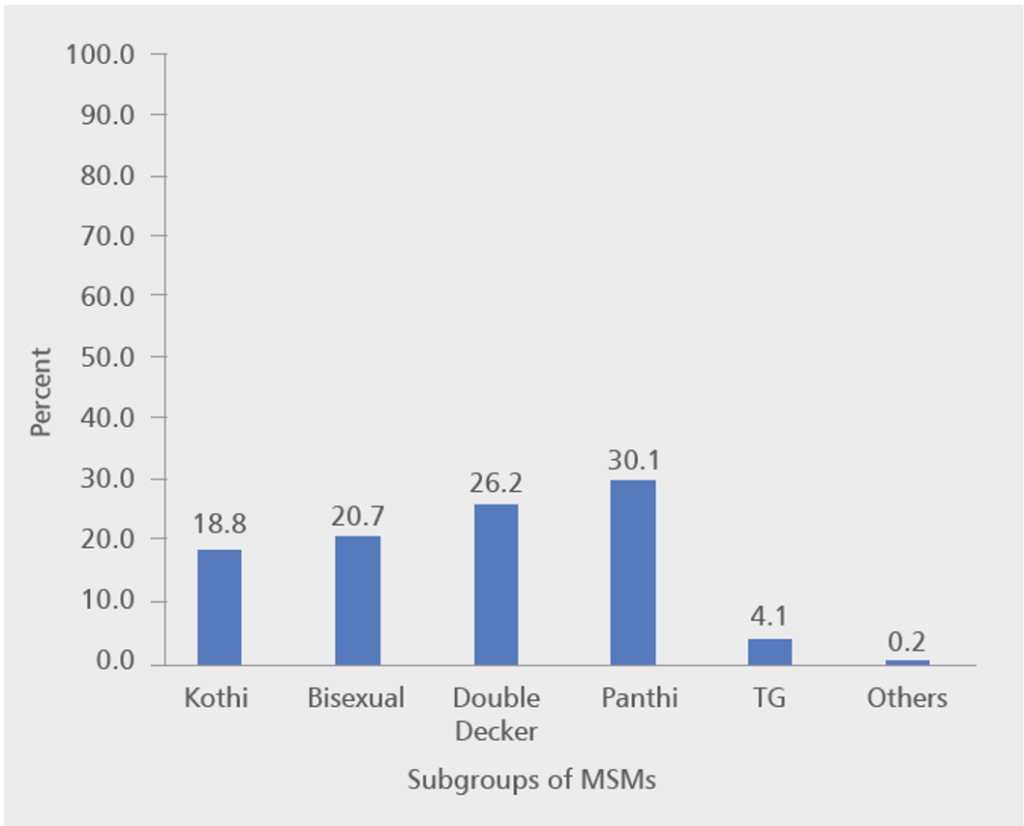
Program Exposure of MSMs active on virtual sites:
It was observed that two-fifths (42%) of the MSMs in Delhi visited any physical location for solicitation in the month prior to the mapping. Considering the present program’s focus on physical hotspots, all or a large proportion of MSMs do not visit the hotspots and might not have been reached by the program.
Moreover, only 15% have heard about NGOs/organisations providing HIV prevention and treatment services, and out of these, only 7% have been contacted by peer educators in the last three months before the mapping exercise. The awareness of MSMs on the NGOs/organizations providing HIV services was low across all the mapped virtual sites. This indicates that the TI program with its physical hotspot-based mapping approach might be missing out on covering this population active on virtual platforms (Figure 6).
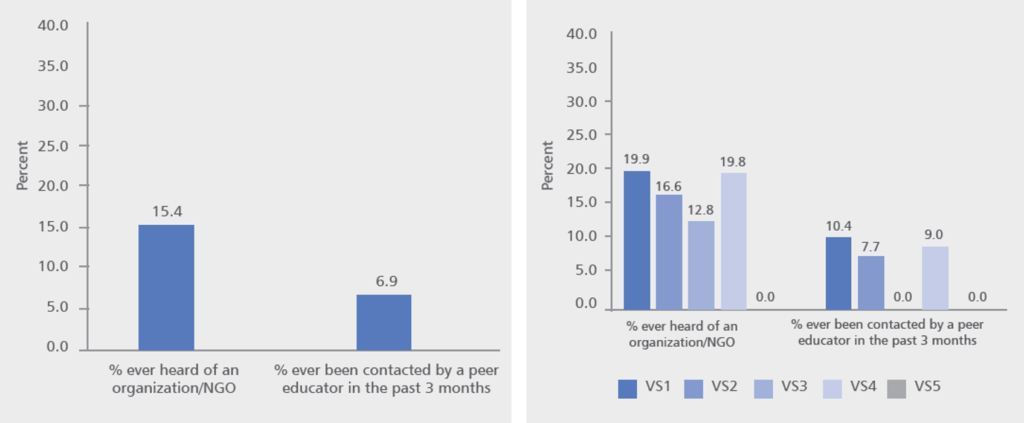
Policy and Program Relevance & Implications
The size estimation has captured information about MSMs who use virtual platforms for solicitation, their population size estimates and their solicitation patterns on virtual platforms. This information is critical to design effective HIV intervention programs. As the size estimation indicated, a significant number of MSMs are active through virtual sites and only two-fifths visit physical hotspots, it is evident that the conventional TI approach with the focus on physical hotspots may not be able to reach all MSMs. Since reaching all MSMs is critical to program effectiveness, size estimations that leave out virtual platforms may lead to under-estimation of the MSM population in the state and thereby lead to lower target-setting and gaps in coverage of the programme.
The size estimation also provided information on usage patterns through the day and time of day, with the finding that there is greater activity during the night and on Sundays. So, outreach activities can be planned based on availability of the population and their solicitation patterns. Further, the MSM population in Delhi that is primarily active on virtual platforms seems to have very low awareness about organizations working on HIV; exposure to current TI programs is quite low among these groups which signals a clear program gap.
Virtual Mapping can become the foundation to strategize and develop a comprehensive HIV intervention encompassing the population on virtual platforms. The size estimates and related findings can be utilized to improve planning and effectiveness of service delivery and strengthen outreach to MSMs in Delhi NCT through the TI program.
Recommendations
Virtual Mapping to be undertaken state-wise to derive national level estimates. Designing an exclusive virtual intervention to reach out to MSMs active on virtual platforms. Capacity Building of the TI teams to identify and reach out to MSMs active on virtual platforms. Designing online outreach activities to mobilize the MSM community active on virtual platforms. Deriving more out of virtual mapping besides size estimation
Way forward
Acknowledging the findings and the subsequent evidence on the need for incorporating MSM population that is active on virtual platforms in HIV interventions, the program further seeks to design a virtual intervention that can reach out to the population through the virtual space and provide possible online services pertaining to HIV prevention and link them to the health facilities as per their requirement.
1DSACS Program Data 2019 – 2020